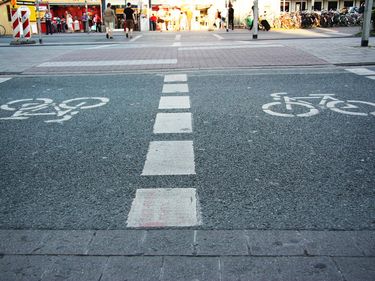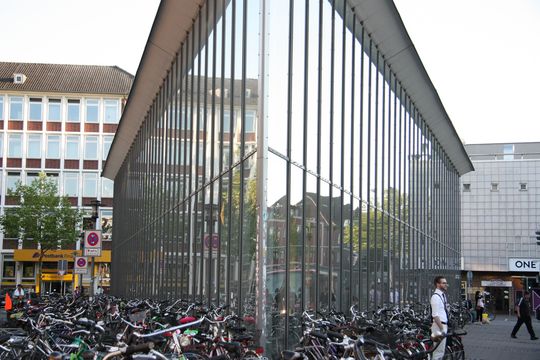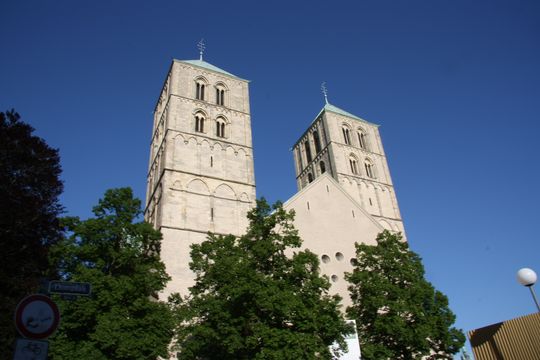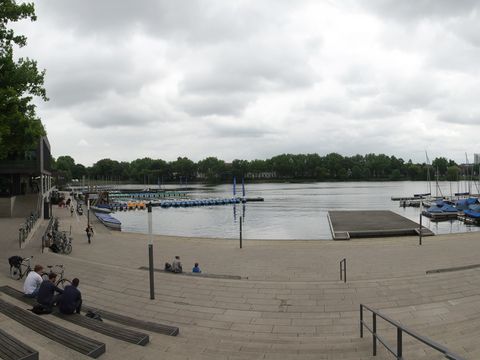Münster is famous for its many bicycles. This beautiful city has a homey feeling and numerous greens and parks to relax in. The universities and research institutes have attracted many young people to the city. In fact, about one out of every five inhabitants is a student. The Münsterland is a region rich in tradition in western Germany.
Facts
315,293 Inhabitants ¹
60,407 Students ²
5 Higher education institutions ²
WELCOME TO MÜNSTER
With about 60,000 enrolled students, Münster is one of Germany’s largest student towns. City living is not as hectic as in a metropolis. Life moves at a slower pace, but the city is certainly not boring. You especially notice it in traffic. The locals love their bikes and prefer to use them instead of their cars because the city is extremely compact. You can cover short distances faster and easier by bike.
Münster is home to several innovative research and technology institutes. Future-oriented companies have discovered this academic potential which helps drive their development. Its many young people, diverse higher education institutions facilities, exciting cultural activities and bicycles as the universally popular method of transportation are what make this city so unique.
There are bike paths throughout the city, and there’s even a bicycle garage at the main train station where you can rent, park or have your bike repaired. At many stop lights, you are allowed to move to the front of the line of cars so that drivers can see you better. If the weather’s bad, you can simply use the public bus lines. But if you go on foot, always watch out for oncoming bikers at the traffic lights and intersections.
There is a long 4.5-km promenade which runs around downtown Münster. This green ring circling the historic part of town used to be the site of the city wall, but is now open to bikers and pedestrians. A large Trödelmarkt (jumble sale) regularly takes place along the promenade during the summer. There you can find (or sell) used goods at an affordable price.
Münster is famous for its Friedenssaal (Peace Hall). Located inside the Historic City Hall, it was the meeting place of a large congress of European ambassadors from 1644 to 1648. They were the first to draft a treaty known as the “Peace of Westphalia” which finally brought peace to Europe after the Thirty Years’ War.
The Historic City Hall is located at Prinzipalmarkt in the heart of the historic district. The buildings around Prinzipalmarkt are all very impressive with their decorative gables. An arcade at street level protects pedestrians from wind and rain. Today the Prinzipalmarkt is a pedestrian street with numerous shops and stores.
Tip
In Münster you can go to many concerts and parties at various clubs. Among these clubs there are some that play independent and rock music.
Münster is a religious centre in the predominantly Catholic region of the Münsterland. Many inhabitants attend church services at St. Paul’s Cathedral. Of course, you can also visit the church even if you don’t intend to pray there. It’s certainly worth seeing.
Interview
SERGII FROM UKRAINE
LIVING IN MÜNSTER
Because Münster has so many students, there is a broad range of cultural activities targeted at a younger audience. Students usually meet at one of the many student pubs in the city which offer food and drinks at inexpensive prices.
You’ll also find a number of bars and clubs at the former harbour.
To relax, we recommend going to the Aasee – a beautiful lake located in walking distance west of downtown Münster. You can rent a paddle boat, relax on the shore or even learn how to sail. The Rieselfelder nature preserve is even more relaxing. Located several kilometres north of Münster, the preserve offers visitors a spectacle in the spring and autumn when thousands of migratory birds stop to rest on the meadows and ponds there.
If you’re interested in art, Münster is the perfect place for you. The city is particularly proud of its “skulptur projekte münster”, an exhibition which takes place every ten years and always leaves lasting memories behind. International artists design gigantic sculptures for the exhibition, some of which remain permanently on display. On a visit to the Aasee, you’ll discover three monumental concrete spheres which were made for the exhibition years ago.
If you like cooking, we recommend going to the weekly market on Domplatz. The market is open every Wednesday and Saturday. There you can purchase or try the wares and regional specialities offered by local bakers, farmers and butchers.
#FranconiaRegion #ChristmasMarket #FranconianCosiness





